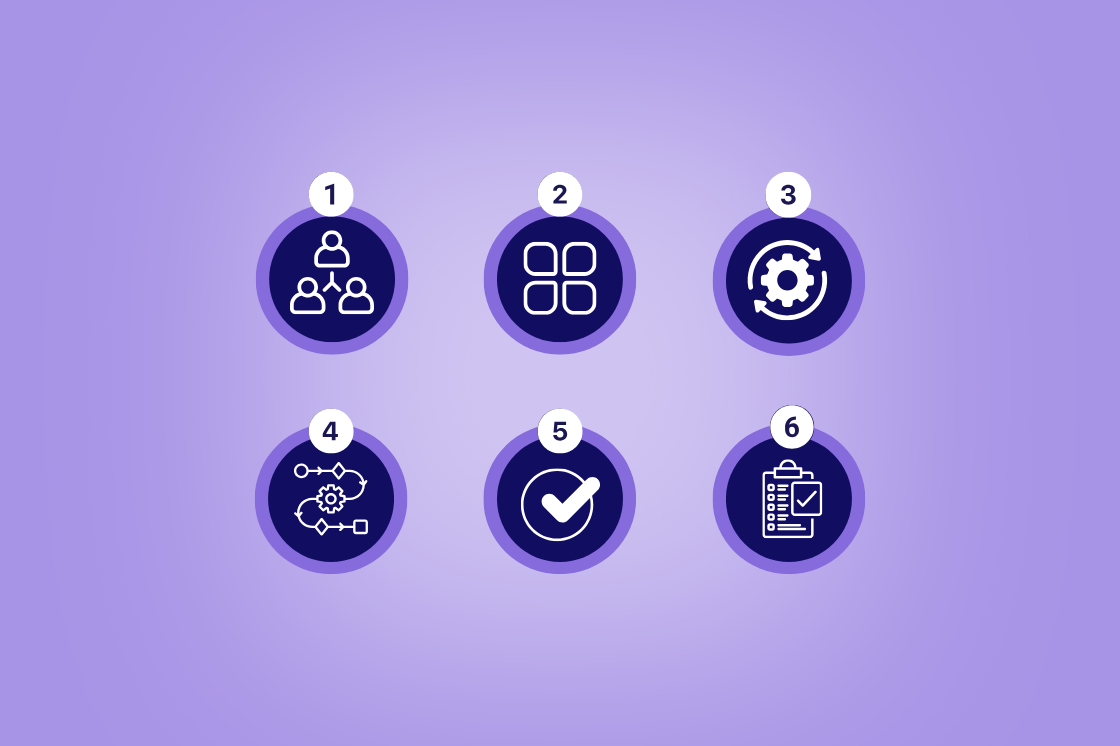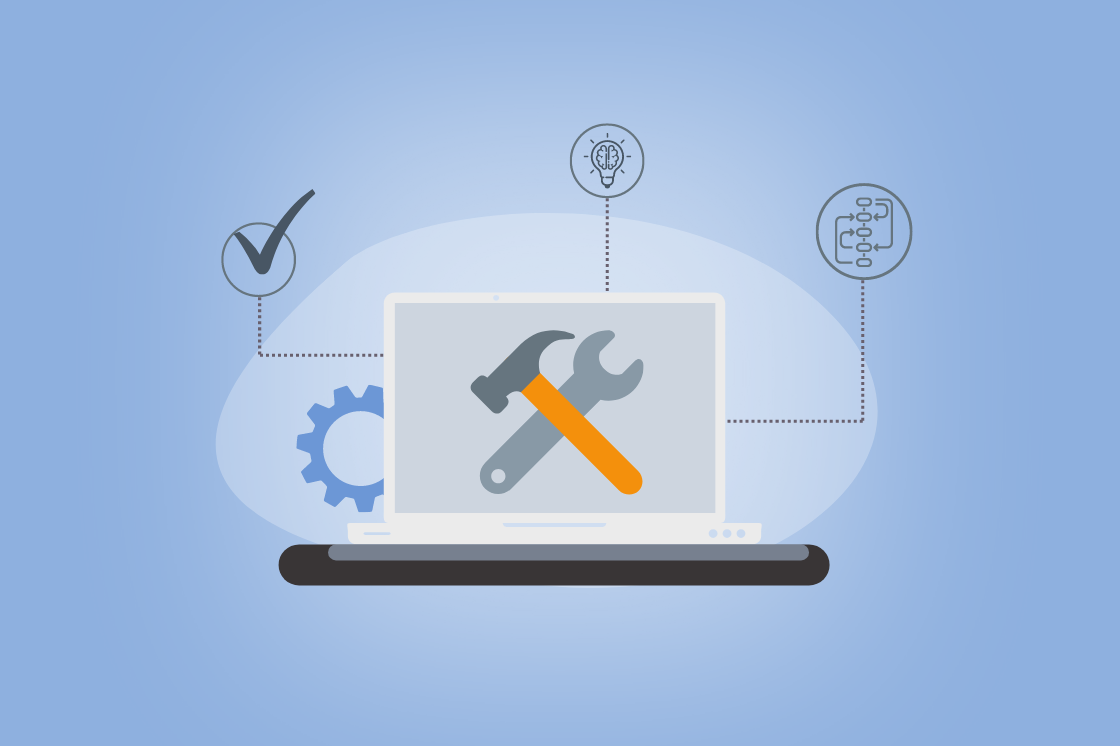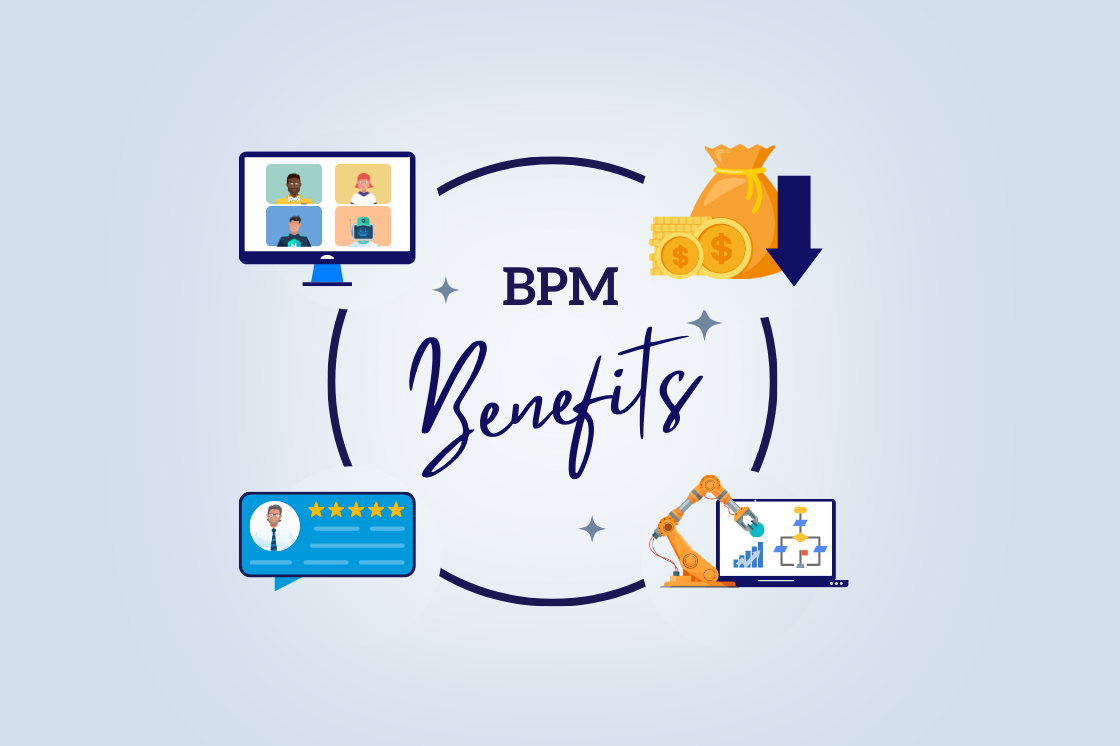BPM and Digital Transformation, What's the Connection?
In the last ten years, organizations have undergone a rapid transformation in how they conduct business and provide services. With external factors such as the pandemic and a weakening economy accelerating the process, Digital Transformation is underway and doesn't seem to be slowing down any time soon. But what role does Business Process Management (BPM) play in all of this?
The pace of digital transformation is relentless, with advancements in the digitization of our lives happening every day.
In order to stay ahead of the game, organizations must possess a remarkable level of flexibility in their operations to swiftly capitalize on emerging opportunities.
Failing to keep up with the rapidly evolving digital landscape could lead to losing customers to more alluring, innovative, and budget-friendly competitors.
Consumers now have the power to choose the retailer that provides the best user experience, from browsing their website to finalizing payment and receiving delivery. Online shopping serves as a perfect example of this shift in power.
Business Process Management is the pathway to harnessing these opportunities, allowing organizations to drive business process digitalization.
What is Digital Transformation?
Digital transformation is the process of integrating digital technology into all aspects of a business, resulting in fundamental changes to how businesses operate and deliver value to customers.
The digital technology transforming business processes involves the use of technologies such as cloud computing, robotic process automation, workflow management software, business process management (BPM) software, artificial intelligence and Low-code development platforms to streamline processes, enhance productivity, and improve customer experiences.
The digitization of business processes involves the conversion of manual processes into digital processes. Business process digitization involves using digital technologies to transform traditional methods of performing tasks, such as filing documents, processing invoices, and managing inventory.
Many businesses have already experienced the benefits of digital transformation. For example, a retail store can use digital technologies to automate inventory management, link sales data from multiple stores, and provide personalized recommendations to customers. A healthcare provider can use digital technologies to streamline patient care, track patient progress, and improve doctor-patient communication. A financial services company can use digital technologies to increase efficiency, reduce costs, and improve customer satisfaction.
However, digital transformation is not without its challenges. One of the biggest challenges is resistance to change. Employees may resist changes to their work processes and may require additional training to adapt to new technologies. Lack of skills and resources is another challenge that businesses may face. To overcome these challenges, businesses need to align their goals and objectives with a strong digital strategy.
One of the key benefits of digital transformation is increased efficiency. Digital technologies can automate repetitive tasks, reduce manual errors, and improve overall productivity. By automating manual processes, businesses can save time, reduce costs, and focus on value-added activities.
Another benefit of digital transformation is improved customer experiences. Digital technologies can provide customers with personalized recommendations, real-time information, and faster response times. By improving customer experiences, businesses can increase customer loyalty, drive repeat sales, and improve their reputation.
In conclusion, digital transformation is a crucial process for businesses looking to stay relevant, competitive, and responsive to the rapidly evolving market and customer demands. By leveraging digital technologies, businesses can gain a competitive edge, adapt to changing market conditions, and drive growth. To successfully implement digital transformation, businesses need to develop a clear vision, establish a roadmap, and engage their employees and stakeholders in the transformation process.
How does Digital Transformation Drive Competitive Advantage?
There are a number of ways that digital transformation drives competitive advantage:
Leveraging Digital Technologies: Digital transformation leverages digital technologies to optimize operations, improve customer experiences, and increase agility, driving competitive advantage. These technologies include AI, workflow automation, and robotic process automation. Integrating these technologies into the digitalization of business processes automates tasks, reduces errors, and increases productivity. Real-time data analysis provides valuable insights for data-driven decision-making and responding to changing market conditions.
Improved Customer Experience: Digital transformation can improve customer experiences by enabling businesses to personalize interactions with tailored recommendations, real-time information, and faster response times, driving customer loyalty, repeat sales, and reputation. Additionally, businesses can attract new customers and generate new revenue streams by providing new products and services such as mobile apps or e-commerce platforms.
Improve Agility: Digital transformation enables businesses to adapt quickly to changing market conditions, experiment with new models, and collaborate effectively with partners, suppliers, and customers, driving agility and flexibility. By embracing innovation and experimentation, businesses can continuously improve their offerings and stay ahead of the competition.
Having a mature Business Process Management (BPM) capability is critical to the success of your digital transformation.
What is Business Process Management?
Business Process Management (BPM) is a management approach that focuses on optimizing and improving the processes of an organization to achieve its goals more effectively. BPM involves analyzing, designing, modeling, automating, monitoring, and continuously improving business processes. BPM is important for businesses because it enables them to streamline their operations, reduce costs, increase efficiency, and improve customer satisfaction. Learn more about the benefits of BPM.
There are six essential components of BPM that businesses should incorporate into their overall strategy:
Business Process Modeling: Business Process Modeling is the process of creating a visual representation of a company's business processes. This component helps businesses to better understand their workflows, identify inefficiencies, and optimize their processes. For example, a manufacturing company can use Business Process Modeling to identify the bottlenecks in their production line, redesign the flow of materials, and improve productivity.
Workflow Automation: Workflow Automation is the process of automating repetitive tasks within a business process. This component helps to reduce manual errors, save time, and improve efficiency. For example, a healthcare provider can use Workflow Automation to automate the appointment scheduling process, reduce wait times for patients, and increase patient satisfaction.
Process Implementation: This is the stage where the business process is put into action. This component involves executing the steps of the process and ensuring that it is carried out consistently and efficiently. It is important to have clear communication, documentation and training to ensure that all employees understand their roles and responsibilities in the process.
Process Monitoring: Process Monitoring involves tracking and measuring key performance indicators (KPIs) of a business process. This component helps businesses to identify areas where improvements can be made and make data-driven decisions. For example, a retail store can use Process Monitoring to track inventory levels, sales data, and customer feedback to optimize their product offerings and pricing.
Process Optimization: Process Optimization involves making changes to a business process to improve its efficiency, reduce costs, and increase quality. This component helps businesses to stay competitive by continuously improving their processes. For example, a logistics company can use Process Optimization to reduce transportation costs, improve delivery times, and enhance customer satisfaction.
Process Governance: Process Governance involves establishing policies, procedures, and standards to ensure that business processes are executed consistently and efficiently. This component helps businesses to ensure compliance, mitigate risks, and maintain quality. For example, a financial services company can use Process Governance to enforce regulatory compliance, reduce the risk of fraud, and maintain data security.
Organizational Change Management: An effective BPM program not only focuses on optimizing and improving business processes but also takes into account the human side of change. It recognizes that introducing new technologies and processes can be daunting for employees, who may feel overwhelmed or resistant to change. Therefore, a well-developed BPM program includes organizational change management to help employees adapt and embrace the new processes. Learn more about Business Process Change Management.
Business Process Management and Digital Transformation
A well-developed Business Process Management capability allows for rapid automation and optimization of business processes. Still, the increased agility this capability brings to the organization is even more critical.
BPM is essential if a business is efficient enough to respond to changing market dynamics. Business processes must be repeatable and efficient but, simultaneously, flexible and ready to be changed quickly when the market moves.
BPM is the glue that brings technology and the business together, providing the knowledge and capability to make investment decisions on new technologies and digitization opportunities. BPM allows the IT organization to become an enabler and innovator within the business.
Mature BPM will allow you to demonstrate the alignment between technology and customer/business outcomes. It can illustrate the connection between new technological capabilities and the end-to-end value of the process.
In the ever-evolving digital landscape, businesses cannot keep up without a mature Business Process Management capability. The ability to adapt quickly and efficiently is crucial to maintaining a competitive edge, and BPM is the glue that brings technology and business together to enable innovation and investment decisions.
Originally published Oct 03, 2016 11:51, updated Jul 20, 2022


